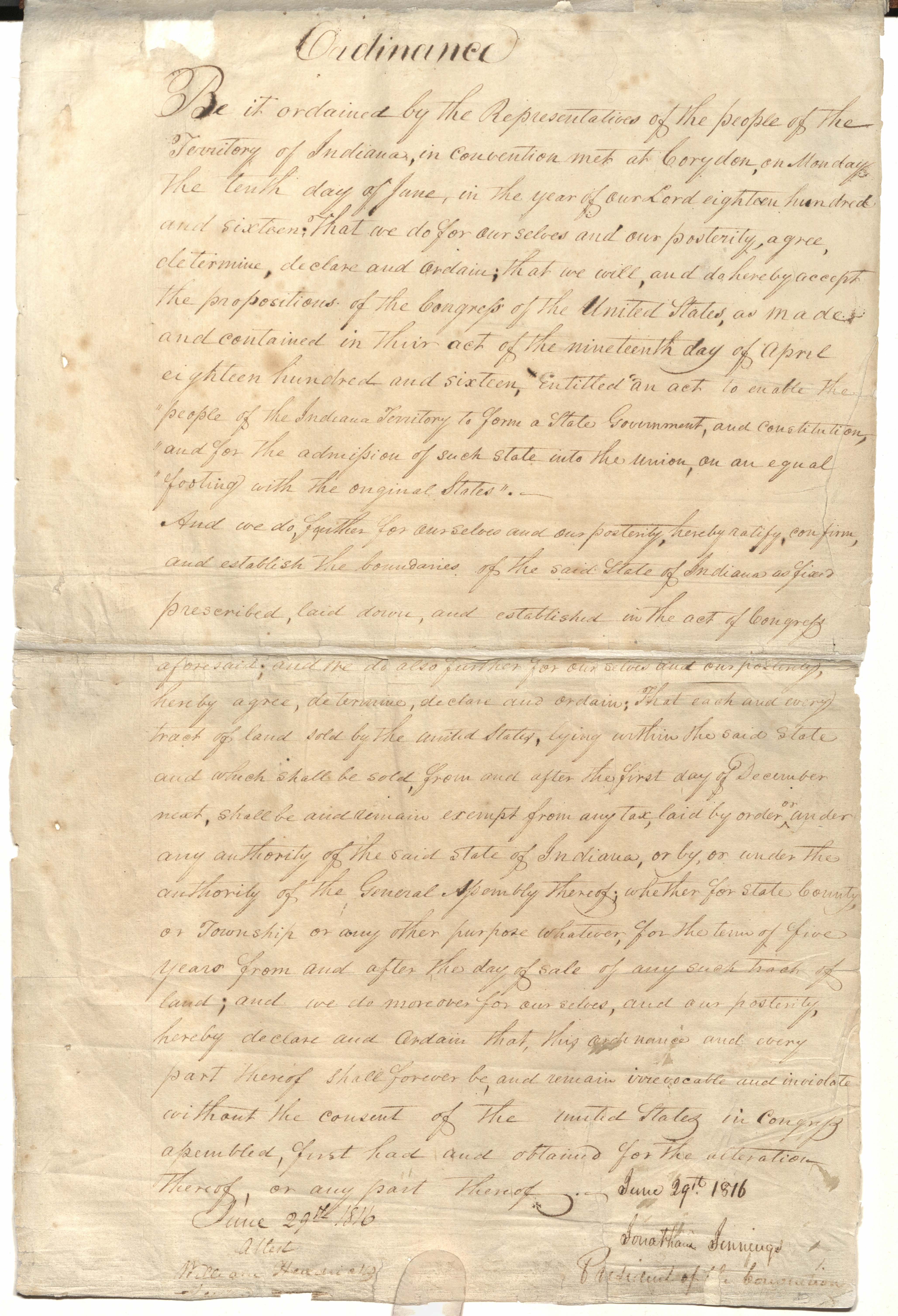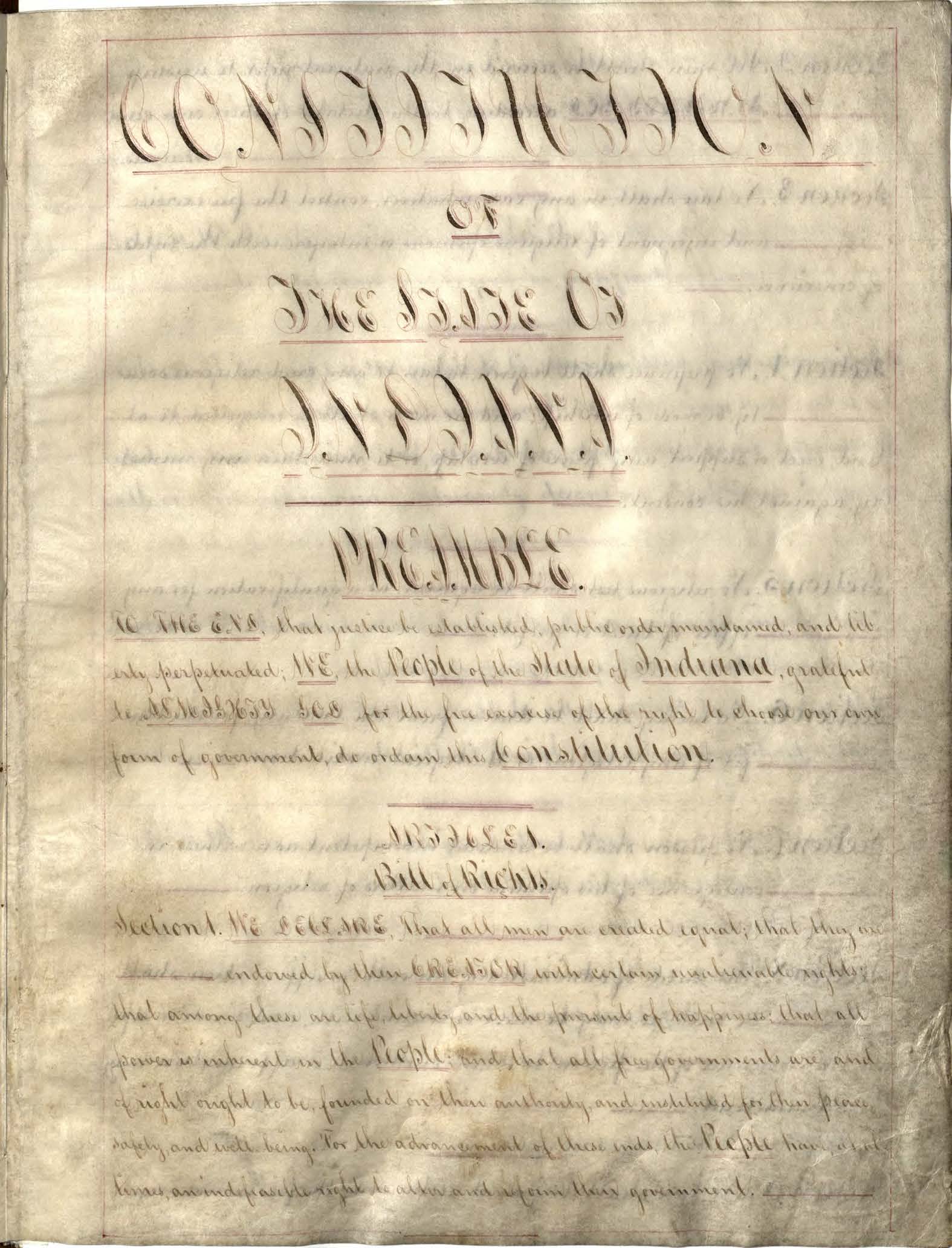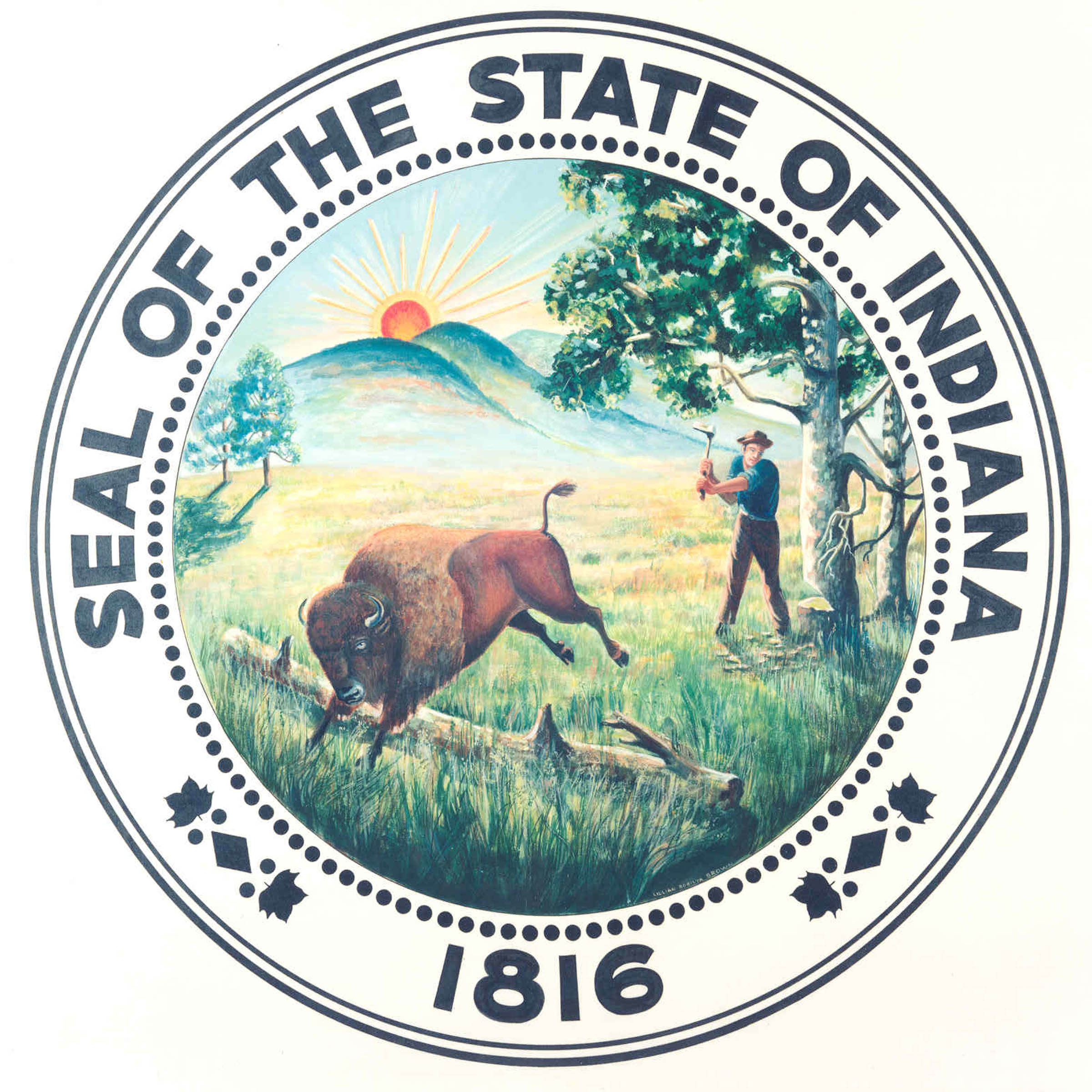1816 Constitution | 1851 Constitution | Acts, Bills, and Code
The Indiana Constitutions
1816 Constitution
 territories had to meet in order to qualify for statehood; the principal one was that the population of the area had to reach a total of 60,000 free inhabitants. When the Indiana Territory met those criteria, the US Congress passed an enabling act on 19 April 1816, authorizing it to adopt a state constitution and form a state government.
territories had to meet in order to qualify for statehood; the principal one was that the population of the area had to reach a total of 60,000 free inhabitants. When the Indiana Territory met those criteria, the US Congress passed an enabling act on 19 April 1816, authorizing it to adopt a state constitution and form a state government.On 13 May of that same year, delegates for the constitutional convention were elected. They met in Corydon, Harrison County, on 10 June and adjourned soon after, on 29 June, their work done. The delegates were able to work so quickly because they essentially adopted a standard constitution. For the most part, they simply copied from the Ohio Constitution of 1802 and the Kentucky Constitution of 1799. The total cost of the convention was $3,076.21.
The result, Indiana's Constitution, was never submitted to the people for ratification; it took effect on 29 June, the day the convention adjourned. Elections of state officers and members of the General Assembly followed soon after, on 5 August. The first General Assembly convened on 4 November and the first governor, Jonathan Jennings, assumed office on 7 November.
The Constitution, with some modifications, remained in effect until 1851. In that year, an entirely new constitution was put into place, as the state reeled under the weight of the de facto bankruptcy caused by its improvident internal improvement schemes.
ref. Charles Kettleborough, Constitution Making in Indiana, Vol. 1 (Indianapolis, 1916).
1851 Indiana Constitution

The 1816 constitution was criticized by many for its ambiguity on several issues and outright omission in other areas, such as its absence of a process for selecting the state attorney general. However, it survived several calls for rewriting until the state’s economic difficulties in the 1840s, brought about by excessive spending on internal improvements that were plagued with graft.
One notable element of the 1851 Indiana Constitution, which went on to be reflected in many future policies in other U.S. States, was the elimination of special, local legislation that did not apply broadly across the State. This eliminated one of the routes for graft that had plagued the State's internal improvement projects, as well as getting the Assembly out of the business of granting divorces among other issues of local concern.
One of the most notorious actions of the 1851 Constitution was its prohibition of the immigration of Black Americans to the State. This was an escalation from an 1831 law that required them to register and post a bond for good behavior. This prohibition was declared unconstitutional by the Smith v. Moody Indiana Supreme Court case in 1866 and repealed in 1881.
Read more about the 1851 Constitution here
Legislative Documents: Acts, Bills, and Code
Indiana Acts: Acts can be accessed through the fully searchable HeinOnline database while at the Archives or other State Government locations. Indiana Acts. Copies of the Acts may also be found in most public and university libraries, and some years are available through various online sources.
Acts are frequently referred to with a citation such as ‘PL 34-1898'. This indicates that it was the 34th Public Law passed of 1898 and can be found as Chapter 34 in the appropriate session volume. In the Acts they will be noted with their original Senate or House Bill number, e.g., SB 240. With the Senate or House Bill number, one can then search the appropriate Journal for the motions and actions for a given bill. The House and Senate Journals can be found on HathiTrust here:
For acts between the years of 1858 and 1887 the Brevier reports can provide additional context, such as debate and testimony. They have been transcribed by Indiana University and are online here.
The IGA website includes more supporting documents for legislation after 2000: https://iga.in.gov/legislative/archive/ For this time period, the resources available here exceed what is sent to the Archives.
Bills in the collection: All the bills submitted to the Indiana General Assembly are present in the State Archives. The bills in the collection range from a simple manuscript of the final act to a file of each iteration of the act caused by the amendment process and the relevant committee reports depending on the time period, with more detailed files arriving later. They are chiefly useful for these iterations, as they otherwise contain little information not included in the published journals and acts.
Indiana Code: Indiana Code is the result of all preceding legislation and represents the law as it stands today. The current Indiana Code can be found on the IGA site here: https://iga.in.gov/legislative/laws/2022/ic/titles/001. Code citations appear as ‘IC 1-1-2-2', which indicates Title 1, Article 1, Chapter 2, Section 2. At the end of each section a citation such as Formerly: Acts 1852,1RS, c.61, s.2. As amended by Acts 1978, P.L.2, SEC.101. will indicate where that portion of the code originated, and by which acts it was amended.

